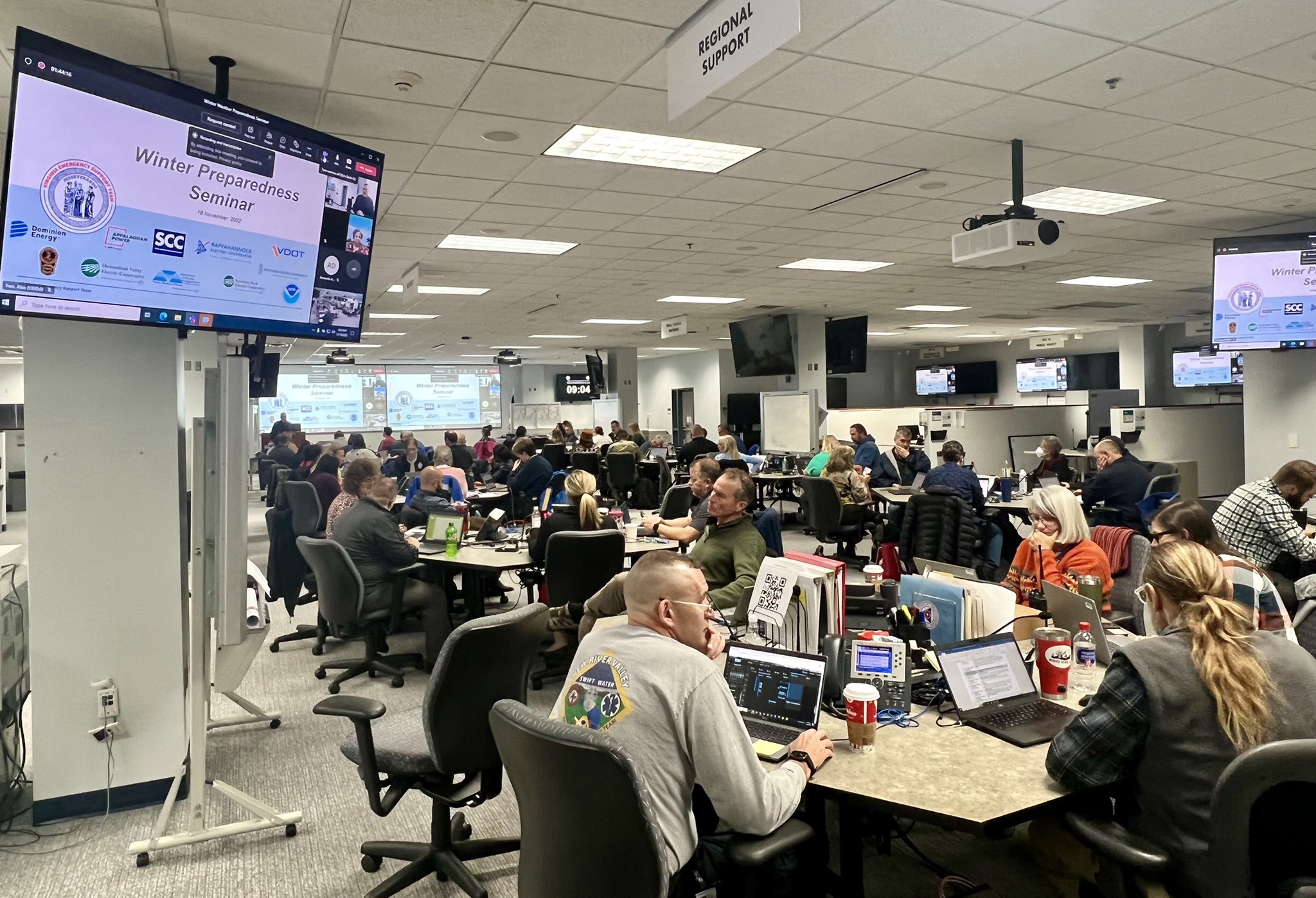The staff at the Virginia Department of Emergency Management (VDEM) responded to 138 search and rescue cases, trained more than 2,800 people, and led 41 exercises in 2022. When they’re not in “grey sky” mode (responding to a state or federal disaster), they are in “blue sky” mode, working in a variety of ways to do whatever they can to get ahead of a disaster.
As the central coordinating arm for all this activity, one of the most important activities that VDEM can control for a positive impact on the community is the distribution of funds to localities and municipalities. This demonstrates how important it is for VDEM to manage its finances quickly and effectively. Unfortunately, many processes involved in managing finances at the State Government level are cumbersome and require significant manual labor and time better spent collaborating with partners and localities for disaster preparation and mitigation.
The agency’s finances are managed across three different platforms: one each for controlling the annual budget, purchasing, and payments. This siloed fund management structure makes it difficult to get a current snapshot of the agency’s cash on hand and lengthens simple procurement and payment requests. Tracking each fund's balance requires diligent and tedious upkeep from the finance team, tight coordination, and continuous communication across the agency’s more than 20 department codes.
This is especially difficult for an agency like VDEM, which needs seamless processes to be poised for more proactive response and recovery for emergencies, as Virginia and the rest of the Nation face increasingly frequent and complex crises. VDEM’s budgeting situation is even more complicated by the approximately 70 grant funding lines they manage daily, each with restrictions and constraints requiring significant oversight to ensure transparency and accuracy in spending these essential funds. The workload was unsustainable over the long run, pulling team members away from mission-critical activities and ultimately contributing to a high burnout rate that has impacted employee retention.

“Everyone in the agency knew we needed to do something differently,” said Ms. Cheryl Adkins, Deputy State Coordinator for Finance and Administration at VDEM. “Our emergency management and support staff were spread thin managing the myriads of financial management sites, ensuring accurate accounting and use of funds, and trying to get the resources they need to do their jobs.”
Approach
VDEM partnered with McChrystal Group to develop an application that employees could use for the latest financial data, consolidated into one location, serving as a “one-stop-shop” for emergency managers to make informed decisions more quickly. In addition, the application automates and standardizes lengthy review and approval processes, providing more transparency and visibility into many financial decisions and actions the agency must make.
“We didn’t want employees having to bounce around to different sites, and we wanted safeguards against accidental appropriation of funds against grants or other funding lines for resources not authorized with those funds,” Adkins said.
VDEM needed a tool compatible with its existing operating systems and IT infrastructure to maximize efficiency and reduce upfront purchasing and licensing costs. Additional training and customization were required to integrate the applications into the agency’s day-to-day operations. The team's approach was divided into four distinct phases:
1. Discovery
McChrystal Group spent a period upfront working alongside leaders and stakeholders across procurement, finance, and budget to capture how they performed their work to gain a better understanding of the requirements for this system. They explored different use cases and personas, the interdependencies of the data available, the systems in which they reside, and the desired outcomes for each stakeholder. They captured the current process, activities prone to bottlenecks and rework, and opportunities for streamlining the process for greater efficiency.
2. Development and Testing
McChrystal Group solution architects created a user-friendly interface, automated process workflows, and dynamic dashboards. They worked directly with staff using the product to iteratively demo and collect feedback on the draft product to align expectations and course correct where necessary.
3. Implementation and Change Management
The McChrystal Group team coupled the design and development of the application with a rigorous test, training, communication, and maintenance plan that supported agency adoption. Feedback from the test session was incorporated into the final product to support the launch date. For several weeks after the launch date, the team conducted dedicated support through ticket resolution and office hours to ensure employees had a means for reporting issues, getting help, and asking questions. The solution is supported by user guides, recorded training, process maps, roles and responsibilities, and system interface diagrams that define user permissions and authorities, access needs, and system functionality.
4. Result
The architects took the information from the emergency management team and designed SPEND (Spending & Payment Engine for Needs and Decisions) Hub. The custom application leverages VDEM’s existing Microsoft licensing, built with an efficient and thoughtfully designed data structure in Microsoft Dataverse. The team leveraged power automation and artificial intelligence (AI) to automate several data entries and process workflows across purchase requests, budget modifications, and invoice payments. Dashboards built in Power Business Intelligence (Power BI) ensure an accurate trace and total for more than 70 funding lines.
Impact
SPEND Hub streamlined self-service workflows for financial management, improved fiscal oversight, and integrated rapid procurement processes, which are vital in the fast-paced emergency management community. With the power of automation, VDEM reduced costly and time-consuming redundant approval actions and exponentially accelerated procurement request processes. The average time to approve a purchase request is now just over an hour, down from two to three days.
 Since implementing SPEND Hub, VDEM has seen improved efficiency in its day-to-day business processes. This makes it easier and faster for the agency to reference the budget and funds available quickly, request a purchase or modify the budget with the appropriate oversight, and review and validate that there are enough funds to approve an invoice for payment.
Since implementing SPEND Hub, VDEM has seen improved efficiency in its day-to-day business processes. This makes it easier and faster for the agency to reference the budget and funds available quickly, request a purchase or modify the budget with the appropriate oversight, and review and validate that there are enough funds to approve an invoice for payment.
With 19 budget modifications in the system, fund managers and approvers have limited access and approvals to funding lines outside their authority. This is managed utilizing 14 unique roles within SPEND Hub, cascaded through the agency with specific permissions to more than 200 users.
“The time is significantly cut, especially getting signature approvals,” said Nellie Capehart, one of the many SPEND Hub users at VDEM. “This App has made significant changes.”
The pre-defined and assigned roles in SPEND Hub reduced the time staff spent researching and getting approval from the proper funds managers. This dramatically reduced the time to fill out and route a procurement request from multiple days to just 20 minutes or less on average.
In the emergency management community, time is a precious resource. With SPEND Hub, the VDEM Team has more time to manage emergencies, not budgets—their satisfaction and productivity with the program show.
“I enjoy the transparency (and) ability…to access everything related to procurement requests, invoices, and finance codes, customize our view, and arrange the columns to our liking...I can go on and on,” Capehart said.



